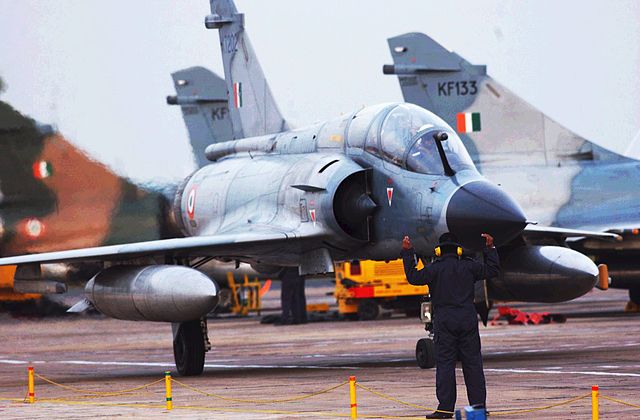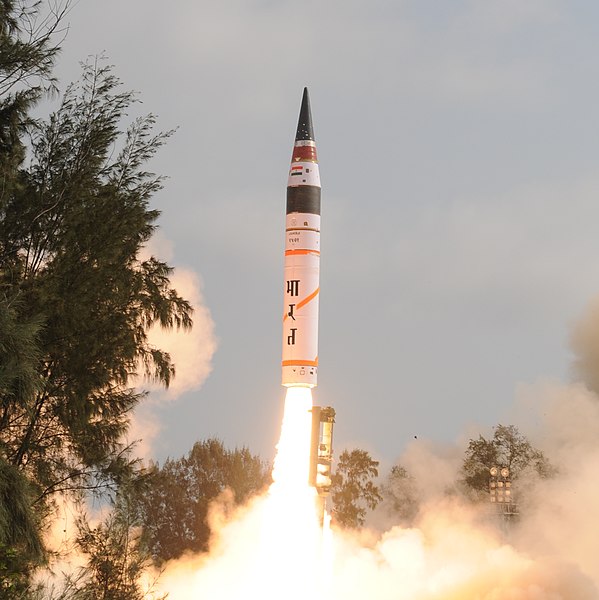India and weapons of mass destruction
India possesses nuclear weapons and previously developed chemical weapons. Although India has not released any official statements about the size of its nuclear arsenal, recent estimates suggest that India has 170 nuclear weapons and has produced enough weapons-grade plutonium for up to 200 nuclear weapons. In 1999, India was estimated to have 800 kilograms (1,800 lb) of separated reactor-grade plutonium, with a total amount of 8,300 kilograms (18,300 lb) of civilian plutonium, enough for approximately 1,000 nuclear weapons. India has conducted nuclear weapons tests in a pair of series namely Pokhran I and Pokhran II.
The Mirage 2000 of the Indian Air Force is believed to be assigned the nuclear strike role, operating from Maharajpur Air Force Station.
Agni-V during its first test flight on 19 April 2012
The Agni-V ballistic missile at the Republic Day parade.
K-15 Sagarika SLBM
The Pokhran-II tests were a series of five nuclear bomb test explosions conducted by India at the Indian Army's Pokhran Test Range in May 1998. It was the second instance of nuclear testing conducted by India; the first test, code-named Smiling Buddha, was conducted in May 1974.
A cylindrical shaped nuclear bomb, Shakti I, prior to its detonation.
During the 1998 Indian general election, BJP's Atal Bihari Vajpayee promised to carry out nuclear tests.
A. P. J. Abdul Kalam headed the team of scientists and engineers for the nuclear explosion.
The Thar Desert in the state of Rajasthan where the nuclear site, the Pokhran Test Range, is located.








